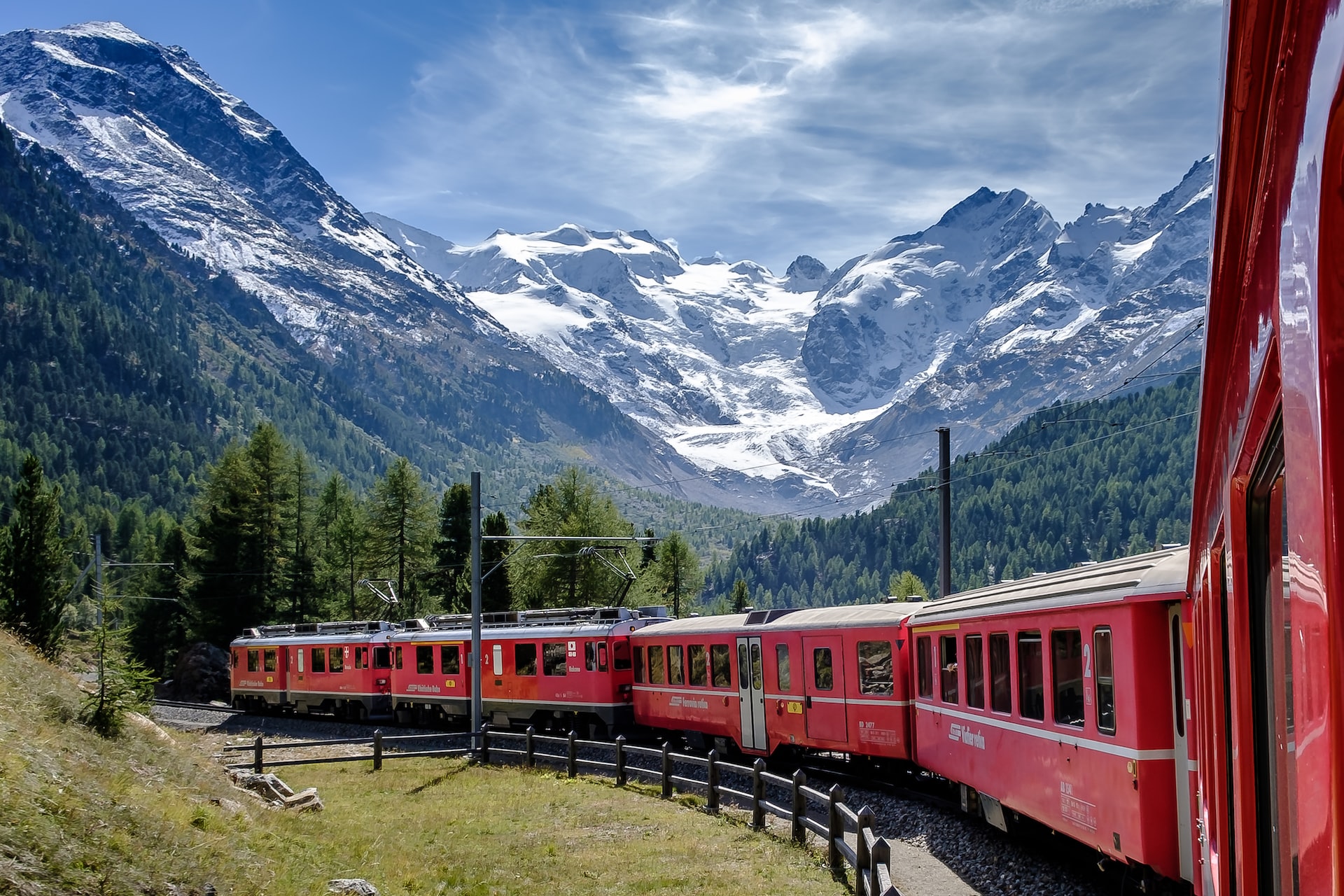Flying is one of the most carbon-intensive ways to travel. But for many of us, it’s a difficult habit to kick. The good news? There are lots of lower-impact travel alternatives for a holiday that’s a little kinder to the planet.
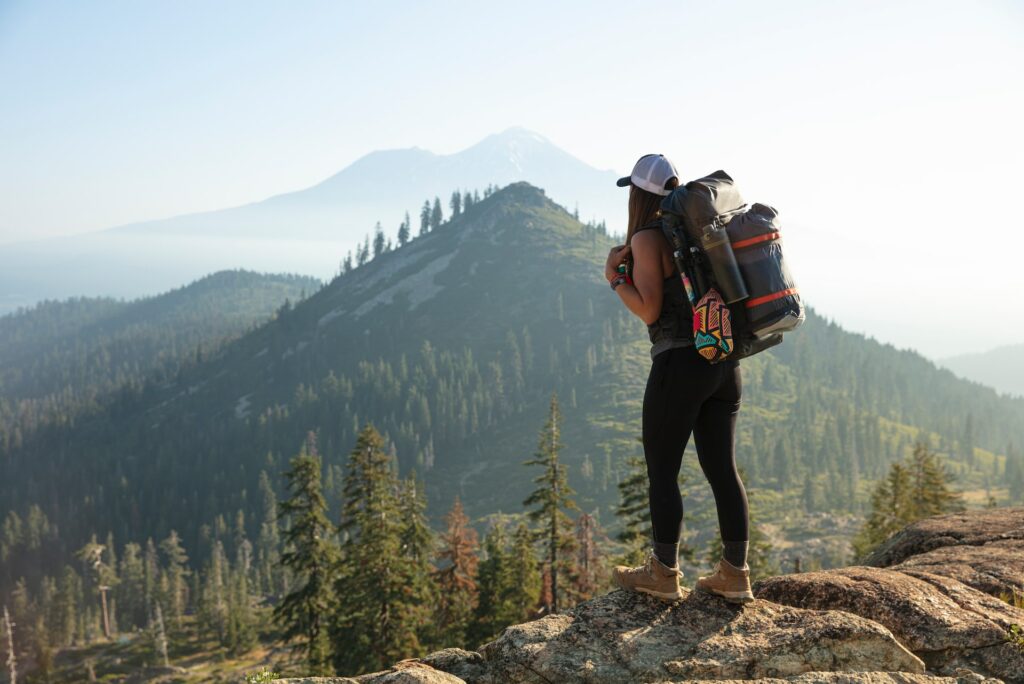
A recent study found that aviation contributes to around 4% of human-induced global warming, through a combination of greenhouse gas emissions and contrails (vapour trails). One of the ways we, as individuals, can help tackle the climate crisis is by reducing the number of flights we take.
Admittedly, the ease with which you can avoid planes does depend on where you live in the world and your resources. Not all of us have access to a good train network, for example. And very often, flying is by far the cheapest option.
But for those who can, flight-free travel is a great way to reduce your carbon footprint. Even if you have to fly to your destination, you could still cut emissions by replacing additional domestic or regional flights with alternatives. Here are some ideas to stoke your wanderlust.
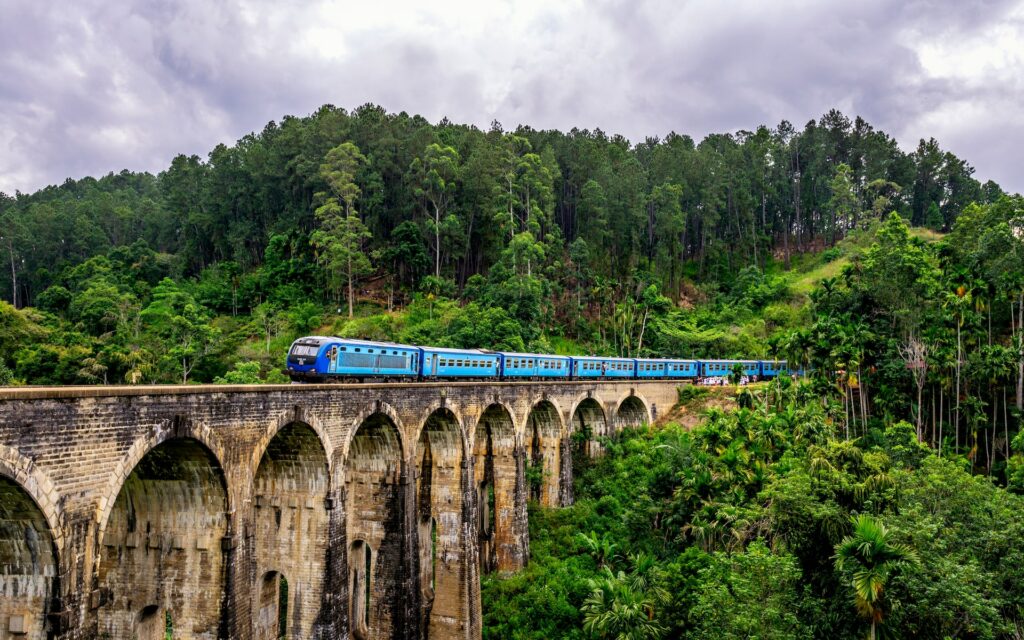
Interrail around Europe
Catching the train instead of flying does eat into more of your holiday, but the experience is part of the trip – watching the scenery from your window, meeting other passengers, being able to relax and spread out. All so much more civilised than a cramped economy seat. Plus, if you need to work, trains usually have WiFi and (depending on your route) phone signal.
With an Interrail pass (no, it’s not just for backpackers), you can travel around the continent, stopping in cities that take your fancy and, if time allows, travelling further out for mountain hikes and countryside retreats.
Inspo
London to Istanbul is an epic trans-European trip with city stops including Paris, Munich, Zagreb, Belgrade and Sofia.
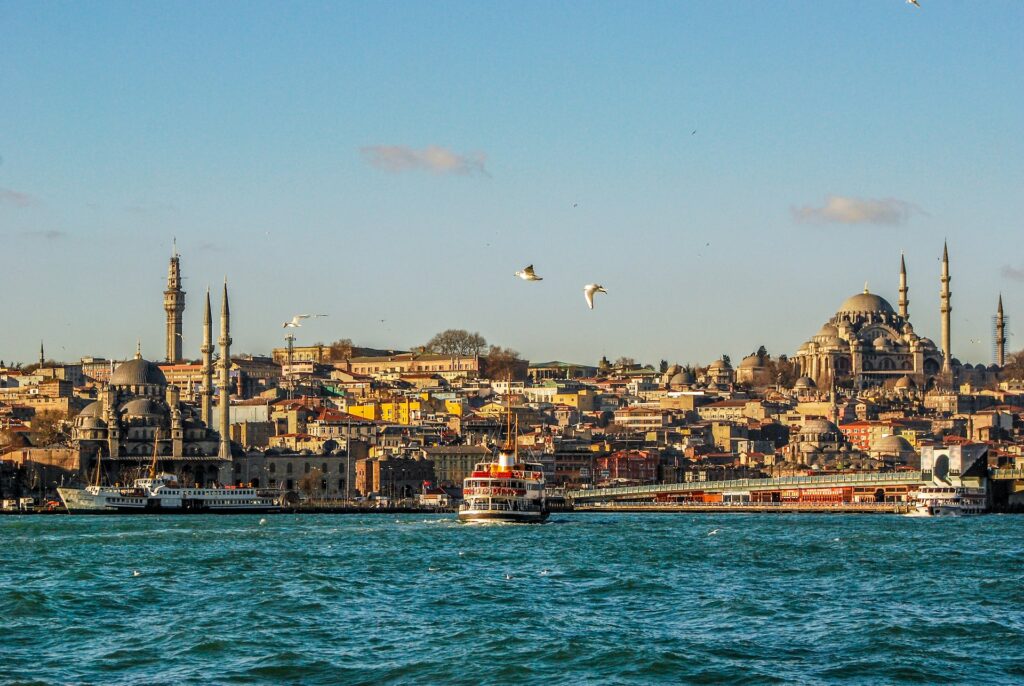
Bikepack through your home country
Another super low-impact form of travel, bikepacking is long-distance travel by bicycle, with your gear strapped to the frame. You can travel for as long as you want and wherever there are decent paths or trails for you and your ride.
Inspo
The best thing about bikepacking is that you can just start from your front door. Plot a route, gather your gear and supplies, perhaps do a couple of practise runs to test how your packing holds up – and off you go!
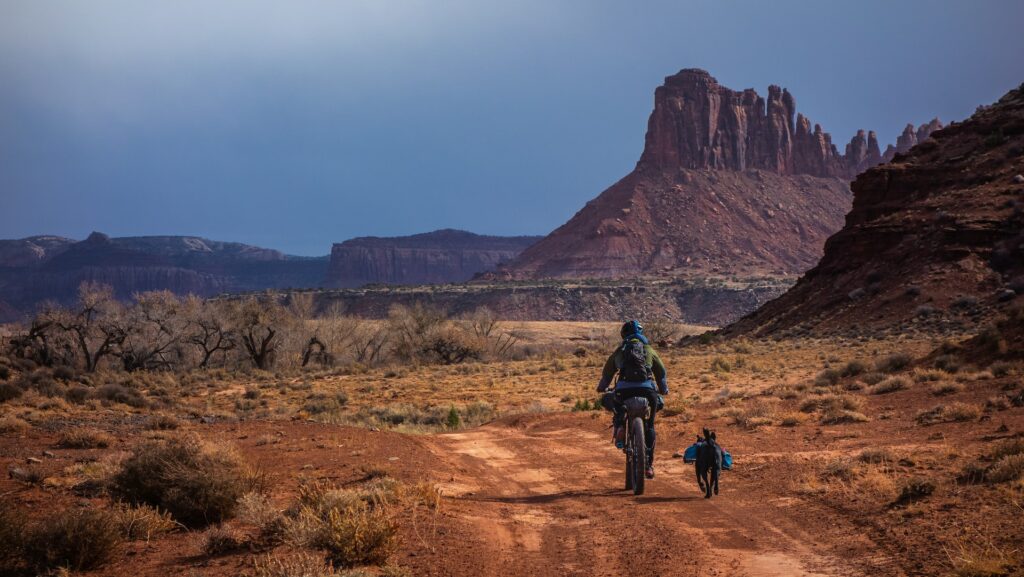
Ferry between continents
For those travelling between Europe and North Africa, there are a number of over-sea routes to take instead of flying. Some of them are very much slow travel options – ferries from Italy to Tunisia can take 24 hours. But the short hop from Spain to Morocco can take under an hour.
Elsewhere, there also are ferries between Japan and China, Argentina and Uruguay, and the UK and the Netherlands.
Inspo
Catch the FRS ferry from Tarifa in southern Spain to Tangier in Morocco. In under an hour, you’ll be on the African continent. Spend a weekend exploring Tangier before, if time allows, heading south on the high-speed train to Casablanca.
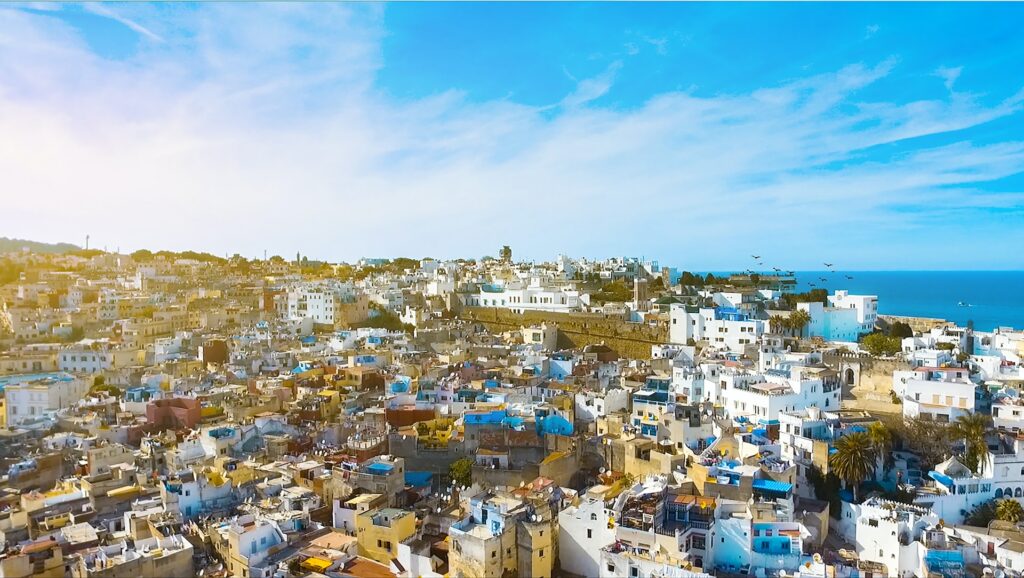
Thru-hike across mountains
The most low-impact way to travel? On foot, of course. For those strong enough to carry all their gear, thru-hiking is a wonderfully slow and scenic way to travel. Thru-hikes are generally long-distance trails that cross entire countries or regions. Bonus points if you can use public transport or a shared vehicle to get to and from the start and end points.
Though it’s a term mostly used in the US and typically applied to the 4,265km Pacific Crest Trail or the 3524.5km Appalachian Trail, there are loads of long-distance walking routes all over the world: the 790km Camino de Santiago in Spain; New Zealand’s 3,000km Te Araroa; the UK’s 1,016km South West Coast Path; the 750km Alpe-Adria Trail, from Austria through Slovenia and into Italy; and Japan’s 4,585km Hokkaido Nature Trail.
Inspo
For a classic American thru-hike, the Pacific Crest Trail is hard to beat. This north-south trail runs along the US’s western mountains between the Mexican and Canadian borders, through California, Oregon and Washington. It takes most people around four to five months to walk the whole thing. Don’t have nearly half a year to spare? No problem. You can hike stages of the trail – whatever distance you can manage in the time you have to travel.
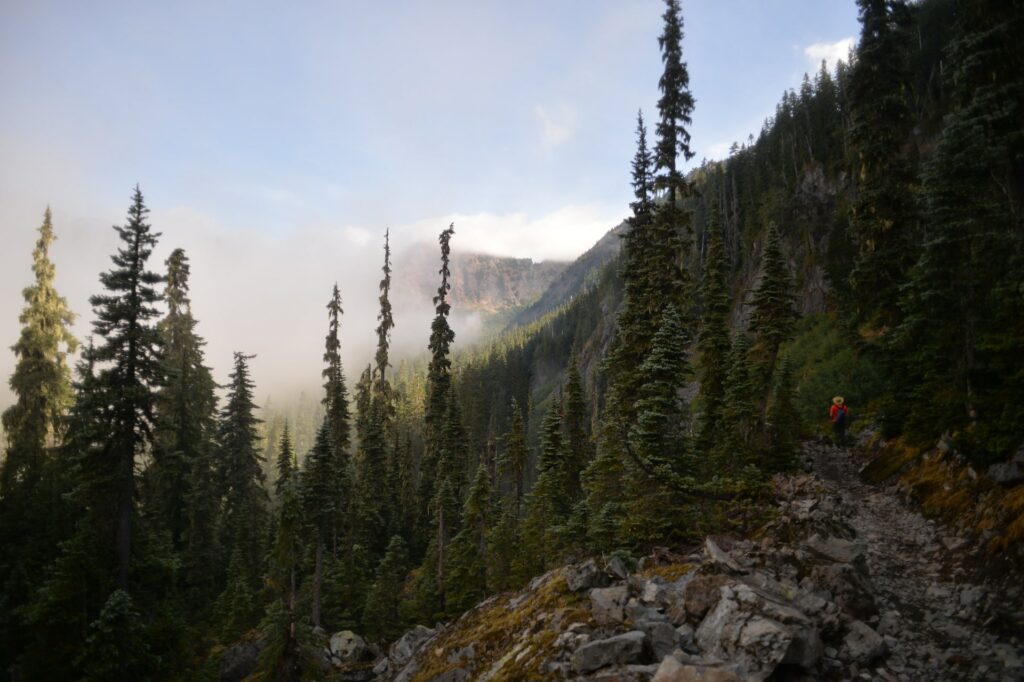
Explore Asia by rail
Much of the Asian continent is well connected by trains, which are often the most affordable ways to travel, not to mention lots of fun, too! China, India, Sri Lanka and Indonesia are just some countries through which you can travel by train, admiring the scenery, chatting to fellow passengers, enjoying snacks from vendors who hop on along the way, and – on some trains – even getting some proper sleep in a flat bed.
Inspo
Travelling by train is a big part of the experience of visiting (and living in) India. There are thousands of trains running across the country, so you’re unlikely to have a problem finding one to your destination – be it the beaches of Goa, the Himalaya mountains, the capital New Delhi or the rivers of Kerala.
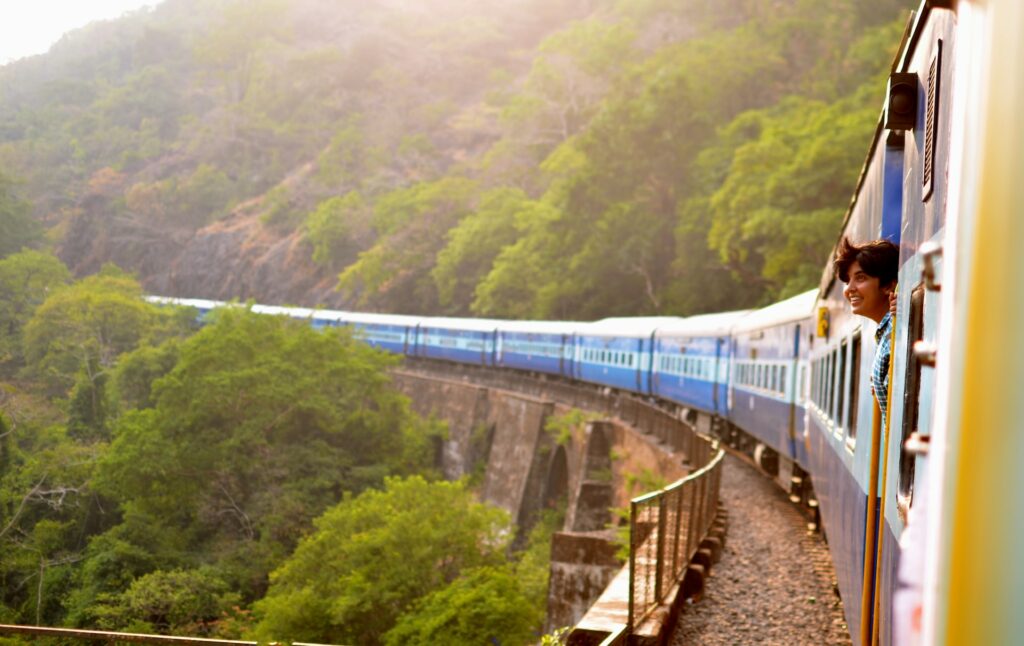
Take a group road trip
When a car has more than one passenger, its CO2 output per kilometre is lower than flights and even buses. That’s based on a diesel car – if you’re driving an electric car, the emissions are of course much lower (even down to zero if charging is powered by clean renewables). But also, sometimes cars are the only viable options for travel – if you have a lot of luggage or specific needs, or if there’s no public transport available. Just try to get your whole crew in one car to keep your footprint as low as possible.
Inspo
Some countries are made for driving, with long, empty roads and vast landscapes that stretch forever. There are many, but Namibia is a standout. Hit the open road and explore the country’s swathes of orange desert and smooth dunes, the great Fish River Canyon, wild Atlantic coastline, low mountains, parched plains and salt pans where desert-adapted wildlife gathers.


